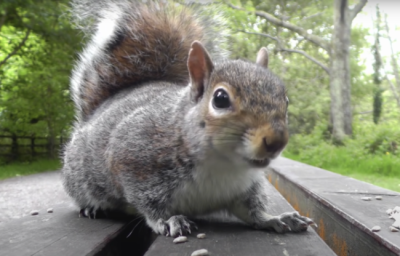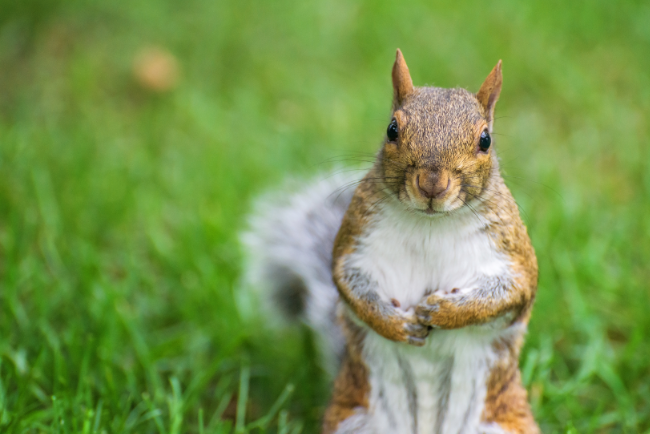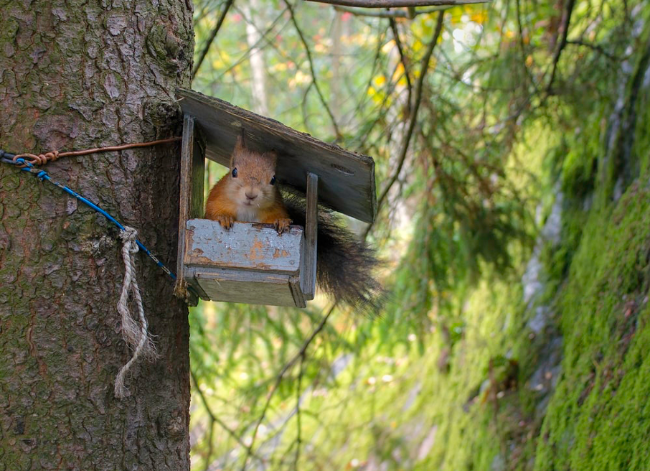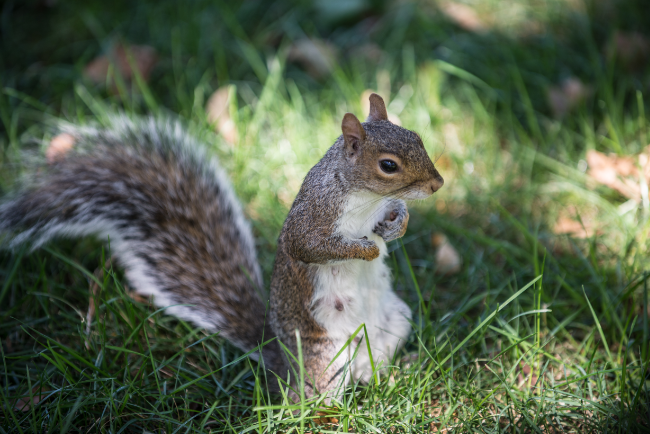Identification
Squirrels are nimble, bushy-tailed rodents found everywhere all over the globe. They belong to the Sciuridae family, which incorporates prairie dogs, chipmunks, and marmots.
There are over 200 species of squirrels, as per the Integrated Taxonomic information system (ITIS), and they are categorized into three types: tree squirrels, ground squirrels, and flying squirrels. These three categories are further broken down into many squirrel types, like Albino, Mountain Tree, Antelope, Spotted, Grey, American Red, Douglas, Fox, Pygmy, Northern Flying, Southern, Arizona Gray, Idaho, Arctic Ground, Albert’s, Franklin, Richardson, Rock, White and tree squirrel.
Tree squirrels typically make their habitat in wooded areas, since they like to live in trees. Ground squirrels live up to their names. They dig burrows, an arrangement of tunnels underground, to live in. Some squirrels also hibernate in burrows during the winter to stay warm.
Squirrel Sounds
Squirrels make scratching noises and can be heard running around in attics and wall voids. Squirrels even have a variety of vocals, including squeaks and bark-like grunts. These rodents, when constantly gnawing on objects, make repeated scraping or rubbing sounds. Their babies tend to make high-pitched, bird-like chirping noises once they feel distressed.
California Ground Squirrels
The California ground squirrel uses 3 kinds of alarm calls when it detects a predator. If it's an aerial predator, the squirrel will respond with a whistle. Large mammalian predators cause these squirrels to create a chattering sound (chatters and chats).
Richardson’s Ground Squirrels
These squirrels communicate through whistles and chirps. Their alarm calls tend to be predator-specific, and chirps are used for aerial predators.
Gunnison’s Prairie Dogs
These squirrels are associated with the Eurasian and American ground squirrels. Their alarm calls are the most specific across the squirrel species. There are no studies that compare the utilization of their call categories, but their alarm calls are said to be very diverse according to the stimuli.
According to one study, their alarm calls changed in response to people wearing different shirt colors. This degree of specificity isn't found in the other squirrels.
North American Red Squirrels
North American red squirrels answer predators through three types of alarm calls. These are seets, barks, and seet-barks. Seets are high-frequency sounds of low amplitude. Barks are loud alarm calls that have broad overtones.
Rope Squirrels (Africa)
Thomas rope squirrels communicate through chucks, whistles, and soft notes.
Sun Squirrels (Africa)
These squirrels communicate through barks and coos. Their barks have varying frequencies and are short, broadband calls. Coos, on the other hand are longer.
Squirrel Tracks
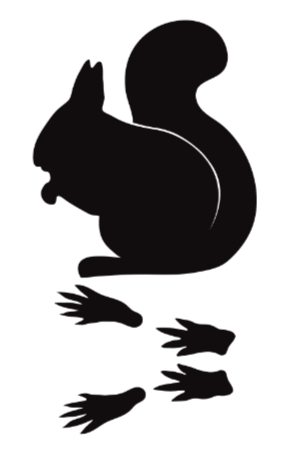
The front feet are about a half-inch by a half-inch, and also the hind feet are longer, about an inch long by a half-inch wide. they need five toes, like all mammals, and all five show up in the footprints. The claw marks usually show in snow or mud. The feet have several pads.
Tracks made on firm surfaces will appear as if a bunch of little spots, whereas tracks in mud or snow look more like small handprints.
Size: Squirrel tracks are relatively small at about two inches long.
Front Paw Prints: Although their prints are around the same size as those left by rabbits, squirrels have front paws with four narrow toes tipped with tiny claws.
Hind Paw Prints: A squirrel's larger rear paws also feature five distinct toes with a huge pad at the heel.
Squirrel Poop
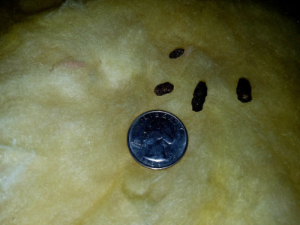
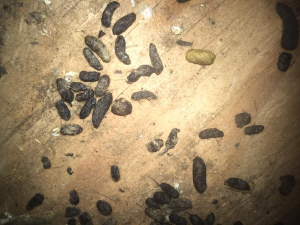
Squirrel poop is typically very small in size (approximately 5 millimeters).
It is elongated in shape and has rounded edges, giving it the look of raisin.
The poop is red or brown and doesn't vary since the diet of the squirrels are kind of consistent. The poop gets lighter in shade with the age of the squirrel.
Squirrel poop can easily be confused with rat poop if an individual doesn't know the difference between them. Squirrel poop is usually larger and found near the sides of the room/house, while rat poop is typically smaller in size and found randomly.
Squirrel Damage
Common Damages Caused by Squirrels
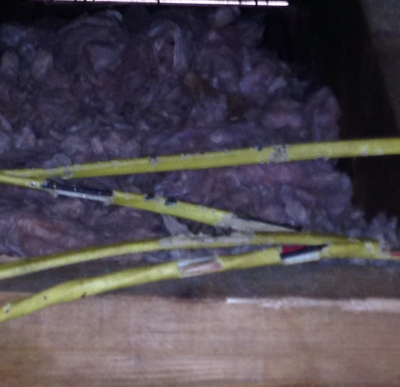
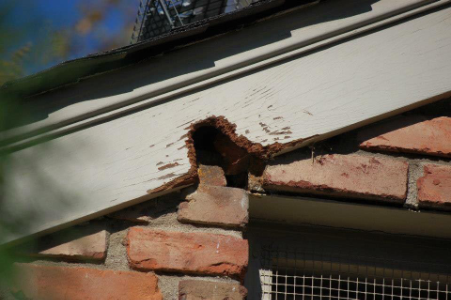
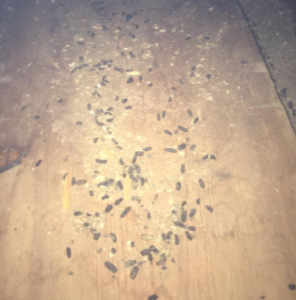
1. Increased risk of fires – Squirrels love chewing on anything they bite into and this includes electrical wires. When the electrical wires are tampered with, there's a higher chance for fire in your property because of the exposure of the metal in the wires.
2. Chewed wood chips – If there's a part of your home that's made with woods, squirrels are likely to linger around them. Regardless if it's a post or a bit of furniture, squirrels can chew on them and make the structure weaker. Attics are usually the most ideal place of residence for squirrels, which is why you'll find chewed wood chips in there.
3. Busted pipes – you'll think that water pipes are too strong for a squirrel’s teeth, but there are several cases where squirrels have broken pipes. As a result, flooding may occur within the world, which may cause water damage.
4. Garden damage – Squirrels love nature and their instinct instructs them to prey on plants. If you've got a garden that you just tend to with all of your heart, squirrels could also be out to destroy them. Squirrels particularly love fruits and vegetables so that they tend to flock towards these plants. However, they also love digging through garden soil to cover their food.
- 5. Health issues associated with squirrel droppings – Squirrel poop can cause a range of diseases. Since squirrels are rodents, their feces may cause leptospirosis, rabies, and other diseases. When squirrels are present, it's unavoidable to return in touch with their droppings.
